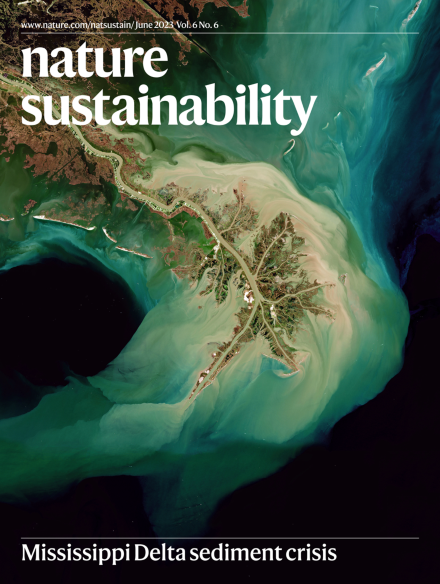City–company collaboration towards aligned science-based target setting
IF 27.1
1区 环境科学与生态学
Q1 ENVIRONMENTAL SCIENCES
引用次数: 0
Abstract
Cities and companies have great potential to reduce pressures on Earth system boundaries. Science-based target setting has emerged as a powerful tool to help achieve the potential, but its uptake has been limited. Moreover, cities and companies usually develop their targets separately, even though many are co-located. Focusing on the top 200 cities and 500 companies by greenhouse gas emissions, we analyse the current state and potential of adopting science-based targets for climate. Of these key actors, 110 cities with existing net-zero targets and 22 companies with existing science-based targets could together eliminate up to 3.41 GtCO2e of annual emissions. We argue that this reduction potential could increase by as much as 67% (to 5.70 GtCO2e) if the cities and companies that already have targets bring their co-located counterparts on board to keep abreast of their ambitions. Using freshwater as another example, we discuss entry points for addressing interrelated Earth system boundaries through city–company collaborations. Our findings elucidate previously untapped potentials that could accelerate transformations for operating within Earth system boundaries. Many of the world’s largest cities and leading companies have separately adopted targets for emissions and water-use reductions. This study examines how co-location and collaboration could enhance efforts to stay within Earth system boundaries.

城市-公司合作,以科学为基础的目标设定
城市和公司在减少对地球系统边界的压力方面具有巨大的潜力。基于科学的目标设定已经成为帮助实现这一潜力的有力工具,但是它的应用受到了限制。此外,城市和公司通常各自制定目标,尽管许多城市位于同一地点。我们以温室气体排放排名前200位的城市和500家公司为研究对象,分析了采用科学气候目标的现状和潜力。在这些关键行为体中,110个拥有现有净零目标的城市和22家拥有现有基于科学的目标的公司,每年最多可减少3.41亿吨二氧化碳当量的排放。我们认为,如果已经制定了减排目标的城市和公司能够让同地的城市和公司加入到减排目标的行列中来,那么减排潜力可能会增加67%(达到5.70亿吨二氧化碳当量)。以淡水为另一个例子,我们讨论了通过城市-公司合作解决相互关联的地球系统边界的切入点。我们的发现阐明了以前未开发的潜力,可以加速在地球系统边界内操作的转变。世界上许多最大的城市和领先的公司都分别制定了减排和节水目标。本研究考察了协同定位和协作如何能够加强在地球系统边界内的努力。
本文章由计算机程序翻译,如有差异,请以英文原文为准。
求助全文
约1分钟内获得全文
求助全文
来源期刊

Nature Sustainability
Energy-Renewable Energy, Sustainability and the Environment
CiteScore
41.90
自引率
1.10%
发文量
159
期刊介绍:
Nature Sustainability aims to facilitate cross-disciplinary dialogues and bring together research fields that contribute to understanding how we organize our lives in a finite world and the impacts of our actions.
Nature Sustainability will not only publish fundamental research but also significant investigations into policies and solutions for ensuring human well-being now and in the future.Its ultimate goal is to address the greatest challenges of our time.
 求助内容:
求助内容: 应助结果提醒方式:
应助结果提醒方式:


